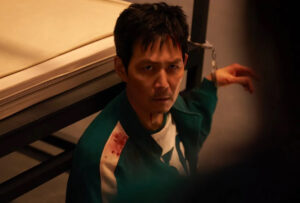In the world of modern action cinema, few universes have been as meticulously constructed and culturally lionized as the John Wick saga. Launched in 2014 with Keanu Reeves’s titular assassin on a vengeful rampage over a stolen car and a slain puppy, the franchise evolved into a mythos — a ballet of bullets, blood, and bulletproof suiting. Each successive installment expanded the architecture of the Continental and introduced audiences to the codified ethics of this underworld with operatic spectacle.
So when Ballerina was announced as a spin-off starring Ana de Armas, expectations were understandably exacting. Could this story — focused on the ballerina-assassin glimpsed in John Wick: Chapter 3 – Parabellum — maintain the brutal grace of the Wick series while establishing its own narrative sovereignty?
As the social media embargo lifts, early reactions offer a nuanced preview: Ana de Armas delivers an arresting performance, the choreography of violence remains hypnotic, and yet, beneath the pirouettes and pistol fire, something appears emotionally incomplete.
The Art of Killing Gracefully
Ballerina centers on Rooney, a deadly graduate of the Ruska Roma school introduced by Anjelica Huston’s The Director — the stern matriarch who treats trauma as training and grief as fuel. Orphaned and remade into a weapon, Rooney’s journey traces a revenge arc familiar to Wick enthusiasts, but from a distinctively feminine lens.
Where Wick’s vengeance is mournful and monk-like, Rooney’s is furious and hyper-focused. This tonal difference emerges not only through de Armas’s sharper emotional register — she balances tenderness with ice-cold control — but also through the cinematography, which eschews Wick’s cold neons for duskier, painterly palettes. Director Len Wiseman, best known for Underworld, saturates the screen with gothic melancholy, invoking a shadowy elegance that bridges Russian folklore and noir stylization.
Crucially, the action remains the franchise’s calling card. Early reviews note that the fight choreography is among the best since John Wick: Chapter 2, blending brutal efficiency with performative elegance. One particularly lauded sequence features Rooney dispatching foes in a mirrored ballroom, her movements echoing the structured chaos of ballet — each kill an exclamation mark within a rehearsed routine.
The Ana de Armas Ascendancy
If Ballerina thrives anywhere, it’s in Ana de Armas’s magnetic command of the screen. The actress, fresh off genre-bending roles in Blonde and No Time to Die, continues her pivot into high-concept action with a performance that’s both physically grueling and emotionally layered.
De Armas lends Rooney more than just vengeance; she injects the character with haunted ambition and flickers of identity reclamation. Rooney doesn’t simply want retribution — she wants acknowledgment. She is not a ghost moving through the margins of other men’s wars; she is the story. And that insistence on agency becomes one of Ballerina’s most potent feminist inversions.
Where John Wick was a cipher of stoic suffering, Rooney burns hotter. De Armas navigates trauma without voyeurism, evoking a kind of survivor’s grit that feels earned, not aestheticized. In a particularly tender moment with a young Ruska Roma girl, she imparts advice laced with both warning and hope — a moment that transcends the genre’s typical emotional minimalism.
Structure, Myth, and the Hollow Heart
And yet, beneath the impeccable action and towering performance lies Ballerina’s greatest flaw: a story too brittle to bear its own weight.
Critics are divided on the plot’s thin scaffolding. While the action beats are expertly timed and interspersed with quiet character work, the emotional stakes never quite crystallize. The central revenge thread feels predictable, especially when compared to the labyrinthine loyalties and philosophical musings of John Wick: Chapter 4.
Supporting characters, including a brief but memorable return by Keanu Reeves, serve more as connective tissue than meaningful presences. The script, co-penned by Shay Hatten (who also wrote for Wick 3 and Army of the Dead), often leans on exposition rather than letting the world breathe. Viewers hoping for deeper lore expansion or thematic innovation — such as a closer exploration of the Ruska Roma’s rituals or Rooney’s psychological fracture — may leave feeling underfed.
Additionally, while Ballerina toys with the metaphor of dance as both performance and punishment, it never fully commits to that poetic conceit. The early scenes of Rooney rehearsing ballet moves feel promising but vanish quickly, giving way to more generic gun-fu showdowns that, while technically dazzling, grow repetitive without narrative propulsion.
Spin-Off or Standalone?
What Ballerina ultimately represents is a franchise litmus test. Can the Wick universe sustain stories beyond Wick himself? Can a different kind of assassin — one shaped by gender, grief, and generational trauma — captivate in the same way?
The answer is yes — but conditionally.
There’s an undeniable appetite for stories like Ballerina: stylish, action-heavy thrillers driven by female leads who don’t just mimic male violence but recontextualize it. In this way, Rooney joins a lineage of characters like Imperator Furiosa, Lorraine Broughton, and The Bride, each one challenging the idea that vengeance must be stoic and male.
However, the Wick universe is known for rich worldbuilding, and here, Ballerina hesitates. It nods to the larger mythology — the High Table, the Continental, the unbreakable codes of blood — but rarely deepens it. The film’s ambition feels restrained, its risks calculated. One wonders what a more radical director — say, Julia Ducournau or Rose Glass — might have done with the same canvas.
Impression
Despite its narrative limitations, Ballerina succeeds in reasserting the elasticity of the John Wick mythology. It’s a film that proves the franchise can stretch beyond one man’s grief and into the scar tissue of others, especially when anchored by a talent as riveting as Ana de Armas.
For audiences, Ballerina offers both kinetic spectacle and quiet revelation. It’s a movie that trusts its choreography but second-guesses its soul. Yet there’s undeniable potential here — in Rooney’s fire, in the ballet-school origins, in the whispered promise of more assassins with stories to tell.
No comments yet.






